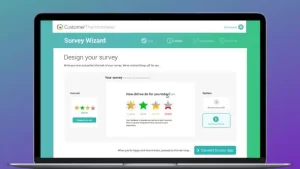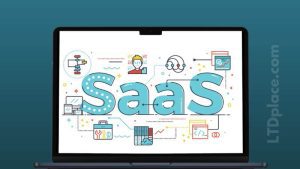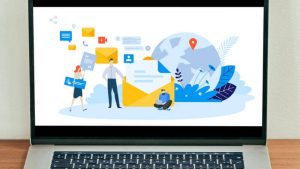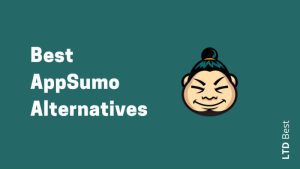Sample Linkedin Outreach Message, Best Linkedin cold message templates
What is LinkedIn Cold Outreach Messaging?
Linkedin is a strong social media platform and the internet’s largest professional network. LinkedIn Messaging refers to sending unsolicited messages or connection requests to prospects on LinkedIn to start a conversation and generate leads for your product or service. Cold-messaging can be done through various methods, such as email templates or connection requests. LinkedIn will connect you with leads, prospects, and potential customers. Sample Linkedin Outreach Message:
To improve the chances of getting a response from messaging, it’s essential to use
Outreach strategy best practices and proven templates with a high reply rate. This includes personalizing your message to the recipient, mentioning mutual connections, and providing a clear value proposition.
Using LinkedIn cold-message templates can help save time and increase the effectiveness of your outreach. Some best LinkedIn message templates include introducing yourself and sharing why you want to connect, asking for a quick call to learn more about the prospect’s business, or sharing a relevant article or resource.
When sending cold-messages on LinkedIn, it’s crucial to follow LinkedIn’s policies and guidelines to avoid being flagged as spam. Additionally, using automation tools or excessively sending messages can harm your LinkedIn profile and reputation.
LinkedIn messaging can be an effective outreach strategy for growing your business and generating leads. Still, it’s crucial to approach it with a thoughtful and targeted approach to increase the chances of success.
You’ll find various LinkedIn message samples in this blog that you may copy, personalize, and use to engage with…
What Makes LinkedIn Messages Different From Cold Emails?
LinkedIn Messages vs. Cold mails: Key Differences and Best Practices
LinkedIn messages are different from cold emails in several ways:
- LinkedIn messages are sent through the LinkedIn platform, while cold emails are sent through email.
- LinkedIn messages are personalized and tailored to the recipient, while cold mails are often sent using a template.
- LinkedIn messages are more likely to be seen by the recipient because they are sent to a person’s LinkedIn inbox.
At the same time, cold mails may end up in the recipient’s spam folder.
To create a compelling LinkedIn message, it is vital to use a message template tailored to the recipient and their specific needs. The best LinkedIn cold templates include a clear message that explains why you are reaching out and what you can offer the prospect. It’s also important to mention any connections or common interests you share with the opportunity to increase the chances of a response.
When sending LinkedIn messages, it’s best to use a connection request rather than an InMail, as connection requests have a higher response rate. When sending a connection request, include a personalized message explaining why you would like to connect and what you can offer the recipient.
Some best practices for sending LinkedIn messages include using a professional profile picture, personalizing each message, using a clear and concise subject line, and following up with prospects after sending a message.
In summary, In some respects, LinkedIn messages differ from cold emails. The right message template and outreach plan will help you generate leads and develop your business.
Because you have to pay to discover emails and inmails are paid communications, linkedin messaging is the most cost-effective approach. Email costs nothing to send, but locating email is not.
Building a good contact base for LinkedIn cold outreach requires a strategic and targeted approach. Here are some steps you can take:
Define your objectives: Before you begin your outreach efforts, define your goals and objectives. For example, are you looking to generate leads, build brand awareness, or establish yourself as a thought leader? Having clear objectives will help you focus your efforts and measure your success.
Define your target audience: Before reaching out to potential contacts, you must define your ideal target audience. Consider factors like their job title, industry, location, and interests. You must ensure that your cold messages are directed to the right people.
Identify decision-makers: If you’re targeting businesses or organizations, you’ll want to identify decision-makers within those companies. Use LinkedIn’s search filters to find people with relevant job titles and check their profiles to confirm their responsibilities and decision-making authority.
Optimize your LinkedIn profile: Your profile is your online professional persona and is often the first thing people will see when you reach out to them. Make sure your profile is up-to-date, polished, and optimized for the type of outreach you are doing.
Use LinkedIn’s search filters: Use LinkedIn’s advanced search filters to find people who match your target audience. You can filter by job title, location, industry, and other criteria.
Join relevant groups: Join LinkedIn groups relevant to your target audience. This will give you access to potential contacts and help you establish yourself as a thought leader.
Connect with people: Start connecting with potential contacts. You can send them a personalized message explaining why you want to connect and how you can help them. Maintain a cordial tone, establish common ground, and be as brief as possible. If you toss out your pitch without personal context, your message will likely fall flat; therefore, aim for cold outreach communications that generate curiosity and connection.
Engage with your contacts: Once you’ve made a connection, engage with your contacts by liking and commenting on their posts. This will help you build a relationship with them.
Use automation tools: You can use tools like LinkedIn Sales Navigator or Dux-Soup to automate some outreach and connection processes.
Value: When you reach out to potential contacts, provide value by offering them helpful content or insights relevant to their interests. This will help you establish yourself as a trusted authority and increase their chances of responding positively to your outreach. Remember that the cold outreach message is only a minor element of your campaign. And if you want people to accept your connection requests and respond to them, you must deliver value.
Remember to be respectful, personalized, and mindful of people’s time when conducting cold outreach on LinkedIn. With a targeted approach and consistent effort, you can build a valuable contact base for your outreach efforts.
Effective LinkedIn sales outreach strategies:
- Leverage Your Network: Use LinkedIn’s Advanced Search feature to find mutual connections and ask them to introduce you to potential prospects. This can help establish trust and make it easier to start a conversation.
- Personalization: Personalize Your Messages. Avoid using generic templates and take the time to research your prospects’ backgrounds and interests. This might assist you in crafting a message that will resonate with them and enhance the likelihood of a response.
- Provide Value: Instead of just promoting your product or service, provide helpful information or resources that are relevant to your prospects’ needs. This can help establish your credibility and build trust, leading to more sales in the long run.
- Follow Up Strategically: Don’t just send a single message and wait for a response. Use follow-up reminders to stay in touch with your prospects and continue the conversation. However, be careful not to come across as too pushy or aggressive.
- Utilize LinkedIn Groups: Join relevant LinkedIn groups where your target prospects are likely to be members. Engage with group members by commenting on their posts and sharing valuable insights. This will assist you in establishing yourself as a thought leader and developing relationships with prospective consumers. Once you’ve established rapport with members, send them a personalized message or connect request. Make sure to tailor your message to each individual and highlight how your product or service can benefit them.
- LinkedIn is a professional networking social network geared at businesses. So why not use the background image to generate leads for your business?
How to write great LinkedIn cold messages? Here are some tips for getting a better response rate from messaging on LinkedIn:
- Don’t start selling or pitching right immediately (since they don’t care), don’t lie about how you looked through their profile (it’s evident when you don’t), and don’t explain your entire life narrative in the short connection box.
- Keep it brief and to the point: Because LinkedIn users are busy, keep your message brief and focused on your value offer.
- Call to action: End your message with a clear call to action, such as requesting a quick call, inviting them to check out your website, or asking for a meeting.
- Use a message template: Using a proven LinkedIn cold template can save you time and help you stay on track.
- Use a clear subject line: Make sure your subject line is attention-grabbing and relevant to the message you are sending. Avoid using generic subject lines like “Hello” or “Opportunity.”
- Leverage mutual connections: If you share a connection with the prospect, mention it in your message. A reciprocal relationship can establish trust and credibility.
- Use LinkedIn Sales Navigator: If you have access to LinkedIn Sales Navigator, search results for potential prospects and send messages directly to them. This tool can help you target your out-reach and increase your chances of getting a response.
- Use a clear call-to-action: Make it clear what you’re hoping to achieve from the message, whether that’s scheduling a call, setting up a demo, or simply connecting on LinkedIn.
- A/B test your messages: Try out different templates and see which ones generate the best response measure. Keep track of what works and doesn’t, and refine your approach over time.
- Please don’t rely solely on cold messaging: LinkedIn can be an excellent tool for generating leads, but it’s not the only way. Consider using another email, phone, or in-person networking channels to connect with prospects and build your pipeline.
How To Send LinkedIn Messages To Prospects?
To send LinkedIn messages to prospects, you should follow these steps:
- Make a prospect list that is specific to your needs: Identify the people you want to connect with on LinkedIn and research their backgrounds, interests, and needs.
- Write a compelling message: Craft a personalized message that grabs their attention and shows that you’ve done your research. You can use a message template or create your message.
- Use LinkedIn message best practices: Use a clear subject line, be concise and specific, and avoid overly promotional language.
- Customize your message: Customize your message for each prospect using the information you’ve found on their LinkedIn profile, mutual connections, or other sources.
- Send a connection request: Send a brief message to the prospect explaining why you want to connect with them.
- Follow-up: If the prospect doesn’t respond, send a follow-up message a few days later. Keep your tone friendly and professional, and provide value in your follow-up message.
- Use tools to help with outreach: LinkedIn offers a variety of tools, such as Sales Navigator and automation tools, that can help you streamline your out-reach process.
Remember to track your out-reach efforts and measure your reply rate to determine the effectiveness of your messaging strategy. You can use LinkedIn to connect with prospects and grow your business with the right message and approach.
Is it worthwhile to upgrade to LinkedIn Premium?
Yes, if you’re going to be active and generate leads. My rule is that if it makes you money, you may give some of it back, especially with LinkedIn, where premium costs far less than the advantage you receive.
What does premium LinkedIn get you?
You’ll gain access to InMail, the ability to search more profiles, see who is viewing your profile, and more specific profile analytics. Also, based on the plan you pick, you will have more powers, whether you are a recruiter or a salesman.
Sure, let’s break down the process of building the perfect list of prospects:
- Define your target audience: Identify the ideal customer for your product service. This could be based on factors such as demographics, industry, job title, or interests.
- Use LinkedIn search: LinkedIn provides an advanced search function that allows you to filter prospects based on various criteria. Use the search to find people who match your target audience.
- Look for mutual connections: LinkedIn lets you see who you have in common with a prospect. Use this feature to identify connections who can introduce you to the prospect or provide a warm introduction.
- Check out their profiles: Take a look at the prospect’s LinkedIn profile to learn more about them, their job, and their interests. This can help you personalize your outreach and tailor your message.
- Create a message template: Draft a message template that you can use as a basis for your outreach. Make sure your message is personalized, engaging, and offers value to the prospect.
- Use a LinkedIn automation tool: Consider using a LinkedIn automation tool to send connection requests and messages at scale. Just be sure to follow the best practices and avoid spammy tactics.
- Measure your results. Track your outreach campaigns to see what’s working and what’s not. Look for metrics such as response rate, conversion rate, and ROI.
By following these steps, you can build a targeted list of prospects and increase your chances of generating leads and growing your business.
How Long Should a LinkedIn Message be?
It is critical to be short and to the point regarding the length of a LinkedIn message. Generally, it’s best to keep your message short and sweet, around 50-200 words. You can use templates as a starting point for your message, but make sure to personalize it to the recipient and their profile. In terms of outreach, messages can be effective, but make sure to research and tailor your message to the prospect. Consider including a call to action and focusing on the benefits of connecting with you. Lastly, track your response rate to gauge the effectiveness of your messages and adjust accordingly.
To improve the number of people who accept you into their network, compose a decent cold LinkedIn connection request rather than just clicking «Connect».
So here’s some more information if you’re interested:
Best sample LinkedIn message templates:
So, if you’re interested, here’s some additional info:
Hi [prospect’s Name],
I saw your profile and noticed you work for [prospect’s company]. I am reaching out to introduce myself and my company, [your company name]. We help businesses like yours [briefly explain your product or service]. It could be a great fit for [prospect’s company] because [reason why your product or service is relevant to their business].
I’d love to talk more and see if there’s an opportunity for us to work together. Are you open to a quick call this week?
Best regards,
[Your Name]
Include your LinkedIn message in a multichannel sequence. The last thing you can do to improve LinkedIn lead generation and keep that response rate high is to turn your message into part of a multichannel sequence. Mention something unique to demonstrate your interest. Some real flattery about how much you like their last blog article, with particular information from it, typically helps.
Then, interact with their posts for a bit. Allow them to see you share dynamic information and valuable resources before texting them again.
The best LinkedIn cold message examples work perfectly for first contact with leads.
As a user, LinkedIn communications are comparable to text messages; you should be aware that your messages open in a tiny chat window.
You may send each LinkedIn connection request manually or automatically.
Some sample LinkedIn message templates using some of the keywords you provided:
- Cold template for prospecting: Hi [Prospect’s Name],
I came across your profile and was impressed by your experience in [specific skill/industry]. I would love to connect and learn more about your work.
Best, [Your Name]
- A connection request message with personalized touch: Hi [Prospect’s Name],
I noticed that we share a connection, [Name of mutual connection], and thought it would be great to connect. Your work in [specific skill/industry] caught my attention, and I would love to learn more.
Best, [Your Name]
- Outreach message for the sales pitch: Hi [Prospect’s Name],
I am reaching out to introduce you to our [product/service] that has helped businesses in [specific industry] grow. It could be an excellent fit for your needs, and I would love to discuss it further.
Best, [Your Name]
- InMail message to a potential collaborator: Hi [Prospect’s Name],
I came across your profile and was impressed by your work in [specific skill/industry]. There could be a great opportunity for us to collaborate on [clear project/idea]. If you’re interested, let’s schedule a quick call to discuss it further.
Best, [Your Name]
- Follow-up message to increase reply rate: Hi [Prospect’s Name],
I hope this message finds you well. I am following up on my previous message to see if you have any opinions on [specific topic/question] and if you’re interested in connecting.
Best, [Your Name]
Remember to customize each message to the specific prospect and keep your messages concise and engaging. Good luck with your outreach efforts!
Include your LinkedIn message in a multichannel series. The final thing you can do to enhance LinkedIn lead generation and maintain that high response grade is to incorporate your message into a multichannel sequence.







